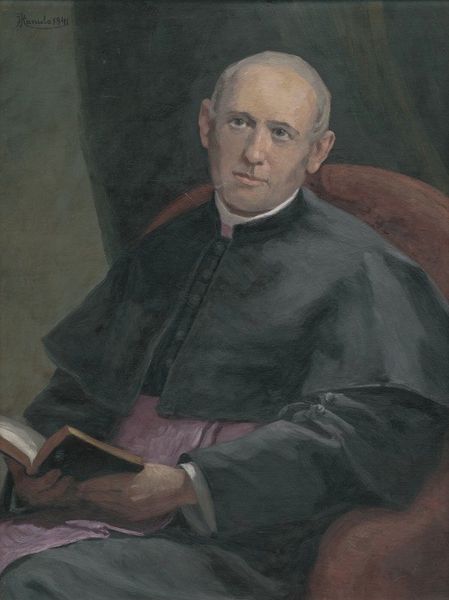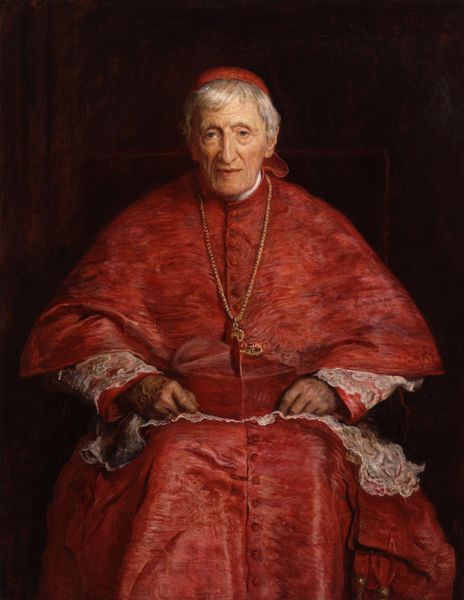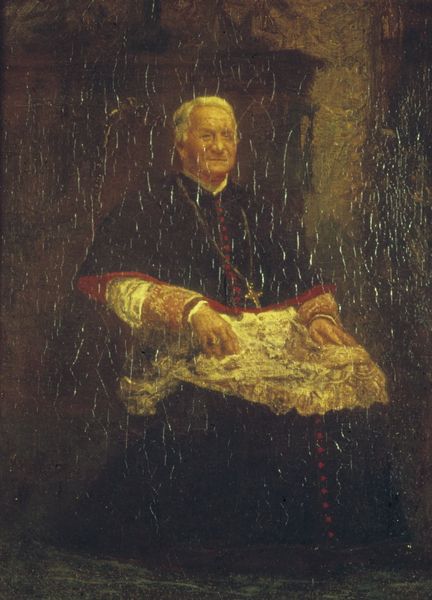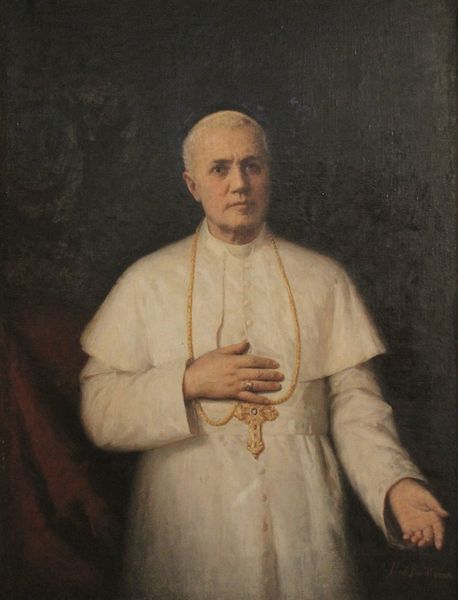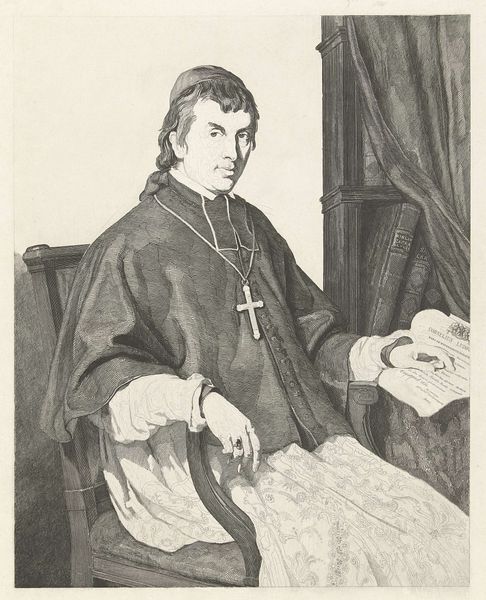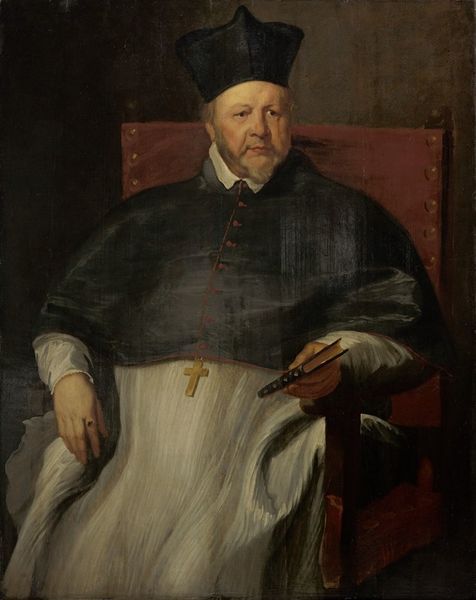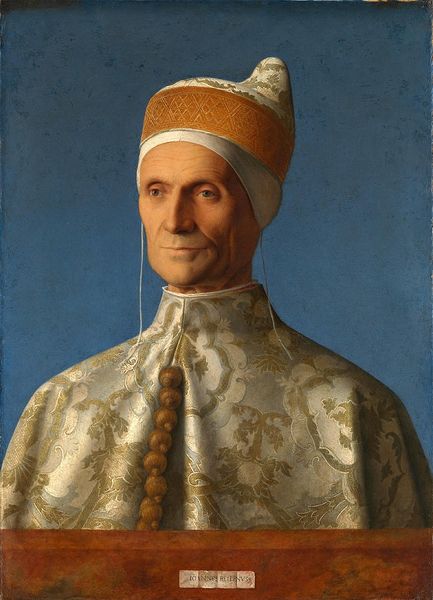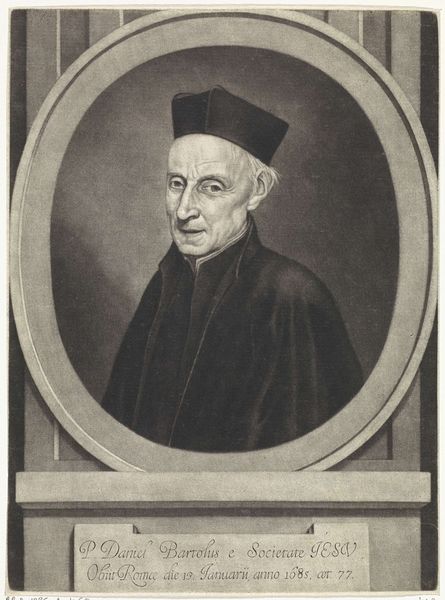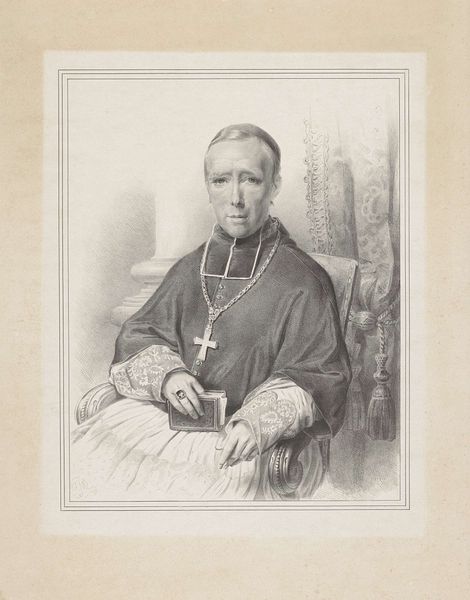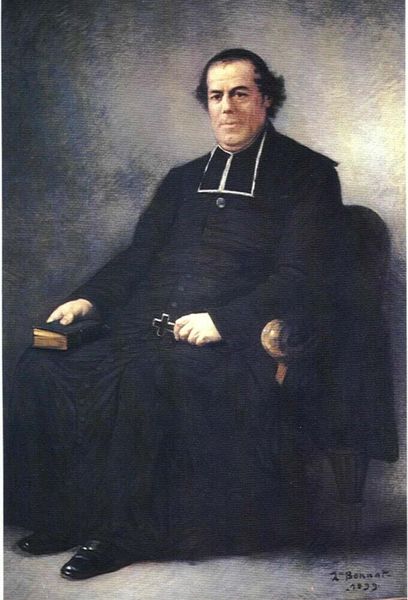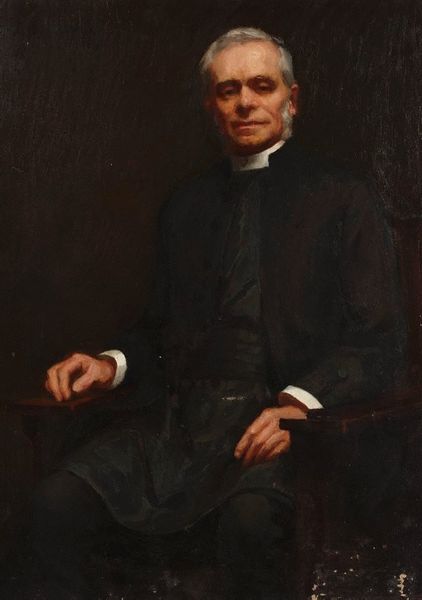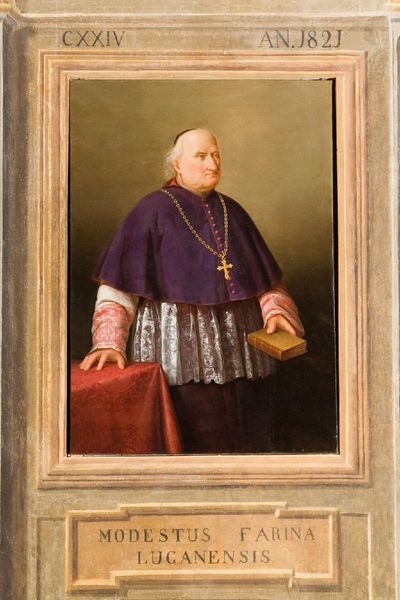
painting, oil-paint
#
portrait
#
figurative
#
portrait
#
painting
#
oil-paint
#
academic-art
#
realism
Copyright: Public Domain: Artvee
Curator: This is Thomas Eakins' portrait of Archbishop William Henry Elder, completed in 1903. What are your initial thoughts? Editor: Somber, imposing. All that dark fabric weighs down the composition and visually represents power, literally materializes it. You can almost feel the weight of it, see it hanging there as this oil paint congeals. Curator: Absolutely. Consider the historical context: this portrait immortalizes a figure who navigated significant social upheaval in the American Catholic Church following the Civil War. His vestments represent not only his spiritual role but also the institution's authority during a period of reconstruction and shifting social norms. The ring too symbolizes his office and dedication. Editor: It's all constructed, isn't it? The robes, the chair... Even the somewhat vague background works to frame him and set the stage. Look closely at how Eakins rendered the fabric; heavy, clearly expensive—material signifiers of status. He even manages to imbue the texture with meaning; how they fall, ripple... Everything serves to enhance his perceived status. Curator: Indeed. Eakins often challenged societal norms through his art, but here, he seems to embrace the traditional power dynamics, at least superficially. I read the Archbishop's stern gaze as a reflection of the Church's unwavering stance on certain social issues, particularly around race and poverty at the time. The materials signify power in part as they were made from natural resources. Editor: But even within the constraints of a commission like this, Eakins reveals his hand, doesn’t he? He highlights the labor involved in crafting these markers of wealth—the tailoring, the sourcing of materials. Those don’t magically appear on a Bishop after all! Curator: That's an insightful point. We might consider how this depiction contributes to the larger narrative of religious authority during a period of American modernization and what this portrait signals about the Catholic Church’s place in that transformation. Editor: And in this age we see those roles continue to materialize differently; it’s crucial we see that these symbols aren’t simply timeless ideals, they come to be from our use and construction of our available matter. Well, this painting definitely gave us a lot to chew on! Curator: Agreed! I appreciate your perspective on how material choices impact interpretations of social narratives.
Comments
No comments
Be the first to comment and join the conversation on the ultimate creative platform.

